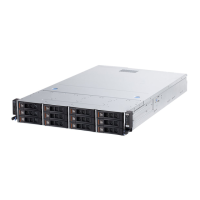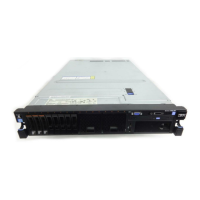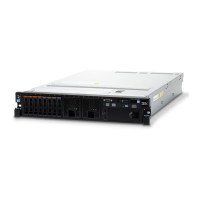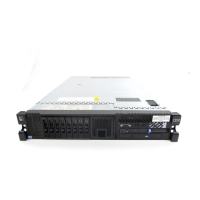Microprocessor
0.02 mL of thermal
grease
5. Use the thermal-grease syringe to place 9 uniformly spaced dots of 0.02 mL
each on the top of the microprocessor. The outermost dots must be within
approximately 5 mm of the edge of the microprocessor; this is to ensure uniform
distribution of the grease.
Note: If the grease is properly applied, approximately half of the grease will
remain in the syringe.
6. Install the heat sink onto the microprocessor as described in 11 on page 105.
Installing a memory module
The following notes describe the types of dual inline memory modules (DIMMs) that
the server supports and other information that you must consider when you install
DIMMs.
v To confirm that the server supports the adapter that you are installing, see
http://www.ibm.com/systems/info/x86servers/serverproven/compat/us/.
v When you install or remove DIMMs, the server configuration information
changes. When you restart the server, the system displays a message that
indicates that the memory configuration has changed.
v The server supports only industry-standard double-data-rate 3 (DDR3), 800,
1066, or 1333 MHz, PC3-6400, PC3-8500, or PC3-10600 registered or
unbuffered, synchronous dynamic random-access memory (SDRAM) dual inline
memory modules (DIMMs) with error correcting code (ECC). See
http://www.ibm.com/servers/eserver/serverproven/compat/us/ for a list of
supported memory modules for the server.
– The specifications of a DDR3 DIMM are on a label on the DIMM, in the
following format.
ggggg eRxff PC3v-wwwwwm-aa-bb-ccd
where:
ggggg is the total capacity of the DIMM (for example, 256MB, 512MB,
1GB, 2GB, or 4GB)
eR is the number of ranks
1R = single-rank
2R = dual-rank
4R = quad-rank
xff is the device organization (bit width)
Chapter 2. Installing optional devices 107

